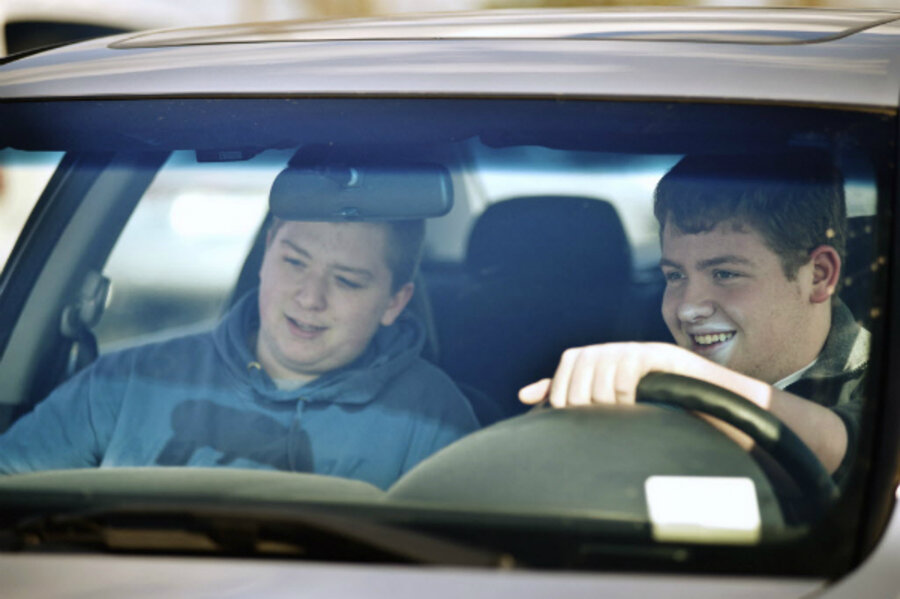My teenage daughter refused to learn to drive, and she's not alone
Her learner’s permit expired last year. There have been no road hours clocked in over a year and the classroom hours are a distant memory. The upshot is that I am still driving Anna around. True, I’ve had a respite while she’s been away at college. But now she’s back and the girl needs rides. Luckily, she’s become very adept at bumming rides from her friends. Sometimes she’ll do a very complicated automobile leapfrog to get from here to there. Sometimes it’s more like ballet and it can be a thing of beauty to watch her arrange her transportation.
Parents far wiser than I have told me not to push the matter. She’ll drive when she’s ready. Two years ago Anna wrote an editorial in her high newspaper about why she refused to learn to drive. “Every time I turn the key in the ignition, my blood pressure spikes and my heart rate doubles,” said my girl. “In the back of my mind, I know that I am driving a two-ton piece of weaponry. With one wrong move, I could end up hurting myself or the people around me.”
My daughter declared war on driving.
In my day the quest to get a driver’s license at 16 was an American rite of passage. But the more research I did, the more I learned that Anna’s aversion to driving is part of a national trend. In a recent study conducted by the University of Michigan Transportation Research Institute, 46 percent of all 16 year-olds had a driver’s license in 1983. By 2008 that number had dropped down to 31 percent. The study’s principal investigator concluded that the Internet is a big reason for this drop in the drive to drive.
There’s no question that teens rely on the convenience of high-tech social interaction to communicate with one another. Why leave your house when you can Skype or chat on Facebook? A recent survey finds that 46 percent of 18 to 24 year-olds would choose Internet access over owning their own car. But according to another study out of the Center for the Study of Young Drivers at the University of North Carolina, there are other mitigating factors for the decrease in teen drivers, including the health of the economy as well as state licensing systems that have more rigorous requirements in place to acquire a learner’s permit and eventually a license. Additionally, driver’s education has been cut back in many public school systems, leaving families to come up with up to $600 for private driving schools. Add that to the growing cost of gasoline and astronomical insurance rates for teen drivers and virtual socializing is a bargain.
As keen as I am for Anna to drive to the grocery store, I’ve also read some very sobering statistics about teen drivers. Although kids between the ages of 16 and 19 count for just one in 20 drivers, they are behind the wheel in one of seven accidents that kill either the driver or a passenger. To that end, 16 year-old drivers are more than twenty times more likely to crash a car than other drivers, and six times more likely to total a car than a 17 year-old. What a difference a year makes.
According to the Centers of Disease Control, these alarming statistics on teen driving are rooted in physiology. Coordinating eyes, hands and feet to drive is a relatively new experience for a teen. A younger driver is also more likely to miscalculate a traffic situation and is more easily distracted than an adult driver. There’s also the underdeveloped pre-frontal cortex of the teen brain, causing them to take risks like speeding, texting while driving or cutting off other cars.
But all is not lost. Parents are critical to driving safety for their teens. Start with something as basic as giving your teen extra practice behind the wheel. Driver Education programs typically provide a total of six hours on the road. To be a reasonably proficient driver, experts put the number at closer to 50 hours and recommend spreading out those hours to cover the winter months.
The American Academy of Pediatrics further recommends that teens have a restrictive license until the age of 18 or until they have been driving under adult supervision for two years. States that have officially adopted a graduated system of driving privileges have seen a 9 percent dip in automobile injuries and fatalities among 16 and 17 year-olds. Teens are also four times more likely to be seriously injured in a car crash at night. Cities that have instituted a curfew on night driving have seen a 25 percent drop in teenage car fatalities.
To see an additional reduction in car accidents the Institute for Highway Safety recommends that teens drive mid-size or full-size cars with air bags to provide more crash protection. The Institute further suggests avoiding sleek, high performance vehicles that may tempt teens to speed. And sport utility vehicles have higher centers of gravity that make them less stable and more likely to roll over.
As for Anna, she’s finally declared a truce on driving. She’s considering getting her license this summer at the age of 19. Maybe she was right to wait. After all, the statistics are on her side.
The Christian Science Monitor has assembled a diverse group of the best family and parenting bloggers out there. Our contributing and guest bloggers are not employed or directed by the Monitor, and the views expressed are the bloggers' own, as is responsibility for the content of their blogs. Judy Bolton-Fasman blogs at TheJudyChronicles.com







